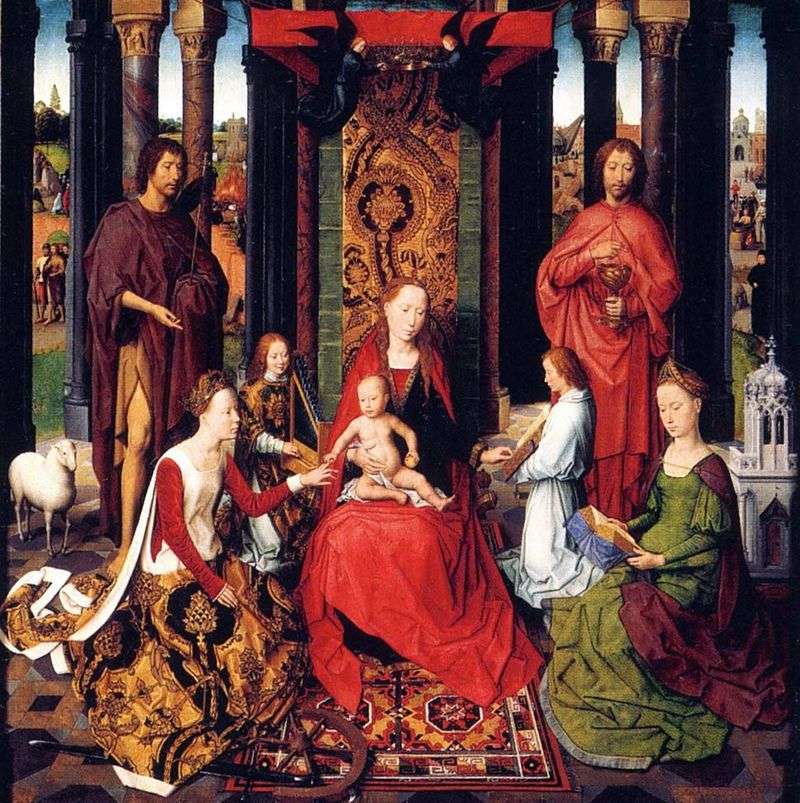
Interestingly, according to the documents, Memling never played a prominent role in the guild and did not hold any administrative position. Indeed, unlike Petrus, Christus Memling did not seek to obtain high status.
The only public organization that ordered his paintings was the hospital of St. John in Bruges. There are four of his works, created by order of the monks of the monastery at the hospital. This happened infrequently, and many myths about the special relationship between Memling and this institution later arose. At that time, Memling and Hugo van der Goes were recognized as the greatest artists of the Netherlands during their lifetime. These were the last years of the “golden age” for Bruges, where relative prosperity was still observed, despite the beginning of a general economic decline in the country due to the constant wars of Charles the Bold.
The tranquility – at least within the city walls – was like a lull before the storm. The blue sky above the parks with still trees, on which not a single leaf moves, and the transparent reflections in the Apocalypse Sea are symbolic images of Memling of this political atmosphere. St. John’s Hospital was the oldest large facility for the sick, the needy and travelers. Mention of it can be found in the sources of the end of the XII century; supported by the city authorities in the framework of the program to combat poverty and social unrest, it has developed to the scale of the complex known today. In 1459 the institution received the status of a monastery. The two communities were governed by the superior, superior and their treasurers.
When, in 1473-1474, a new apse for choirs was built in the hospital church, these four people ordered Memling to have a large triptych to decorate the main altar. The piece still retains the original frame in which it was installed on the altar. For a long time, known as the Saint Catherine’s Mystical Engagement, due to the symbolic gesture of Christ putting a wedding ring on the holy finger, this work is clearly devoted to the Virgin Mary and the patron saint of the institution – John the Baptist and John the Theologian. It is the largest of the epic triptychs of Memling along with the Last Judgment and the Passion of the Lord from Lübeck.
In terms of chronology, these works are evenly distributed throughout his career and, thus, serve as milestones of his work. The altar of two John dates back to 1479 and thus turns out to be in the middle between the two above-mentioned works. The central part depicts the Holy Interview – a collection of saints around the Virgin Mary. She sits on the throne; two soaring angels in dark blue robes lay on her the crown of the Queen of Heaven. On the right hand of Mary, St. Catherine, a participant in the mystical betrothal, can also be recognized by the tools of her torture – the sword and the wheel. In her left hand is Saint Barbara, an attribute of which is considered to be a church of white stone. Barely visible through the openwork stone work of the guest is contained in a glass cylinder on a golden crescent. Although the guest is also a symbol of St. Barbara,
The figures of the two Saints John, standing behind the women on both sides of the Virgin Mary, personify aspects of the Eucharist. John the Baptist points his hand to the true Lamb – Christ, who, being the new Adam, holds an apple in his hand. John the Theologian blesses his cup of venom like a priest blessing a cup of wine during Mass. From the point of view of the sacred meaning of this collection, the book that the angel offers to the Virgin Mary, and the sounds made by the angel playing the organ, on the other hand, have the same meaning. Mary acts as the divine altar.
The composition of the group is perfect in its symmetry, as is the architecture in the background. There is no doubt that Memling took as an example the architectural frame from the Madonna, canon van der Palais van Eyck, changing it to make the space more open and create a light structure with a colonnade directed upwards. The narrow vertical openings between the columns reveal a landscape with ruins and buildings, where scenes from the lives of both St. John are depicted in miniature. Each flap depicts one such episode in close-up.
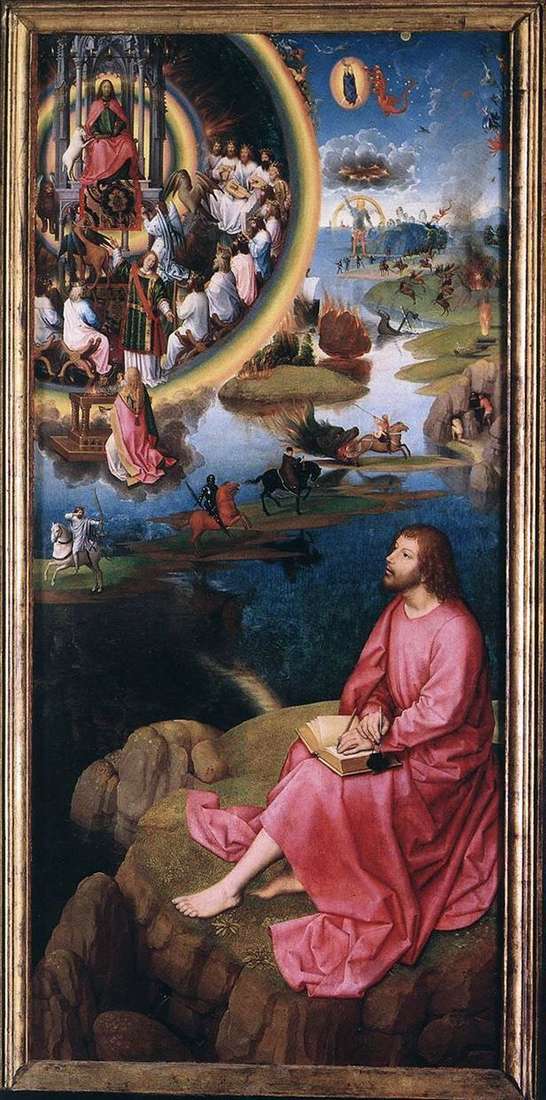 The altar of the two john. Right wing by Hans Memling
The altar of the two john. Right wing by Hans Memling Last Judgment. Central triptych door by Hans Memling
Last Judgment. Central triptych door by Hans Memling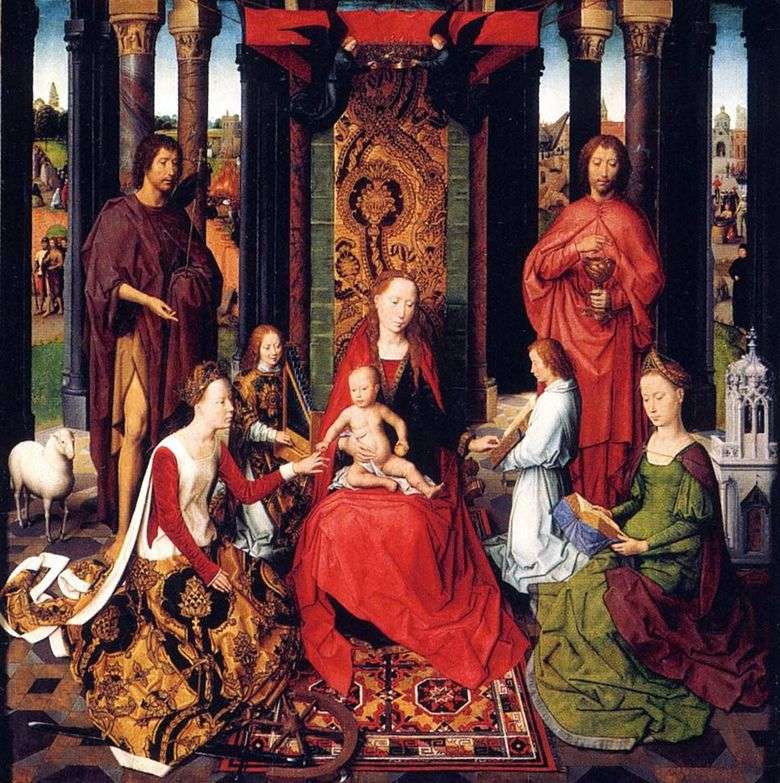 Altar de los dos Johannes – Hans Memling
Altar de los dos Johannes – Hans Memling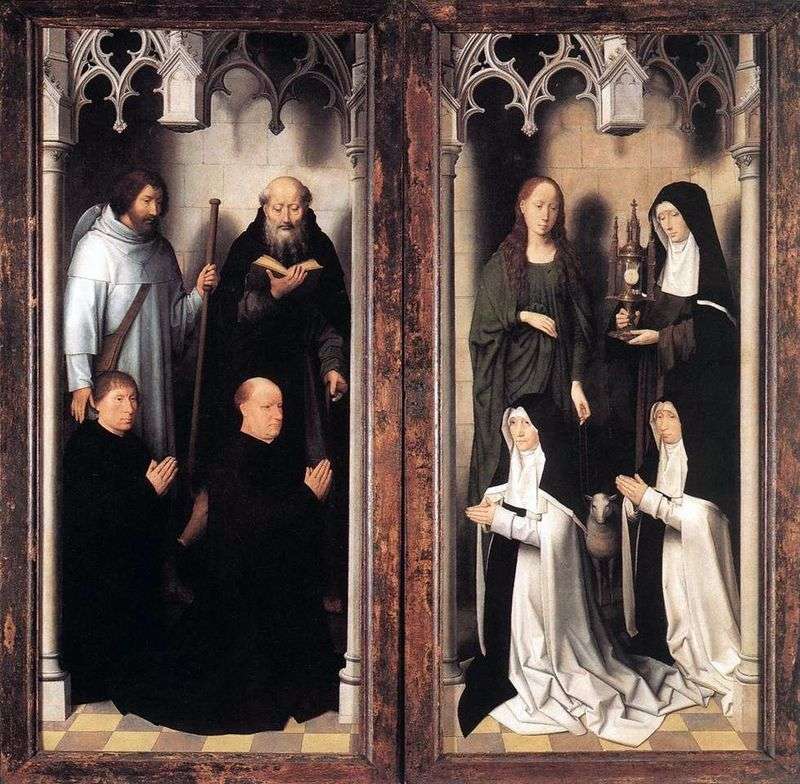 The altar of the two john. External doors by Hans Memling
The altar of the two john. External doors by Hans Memling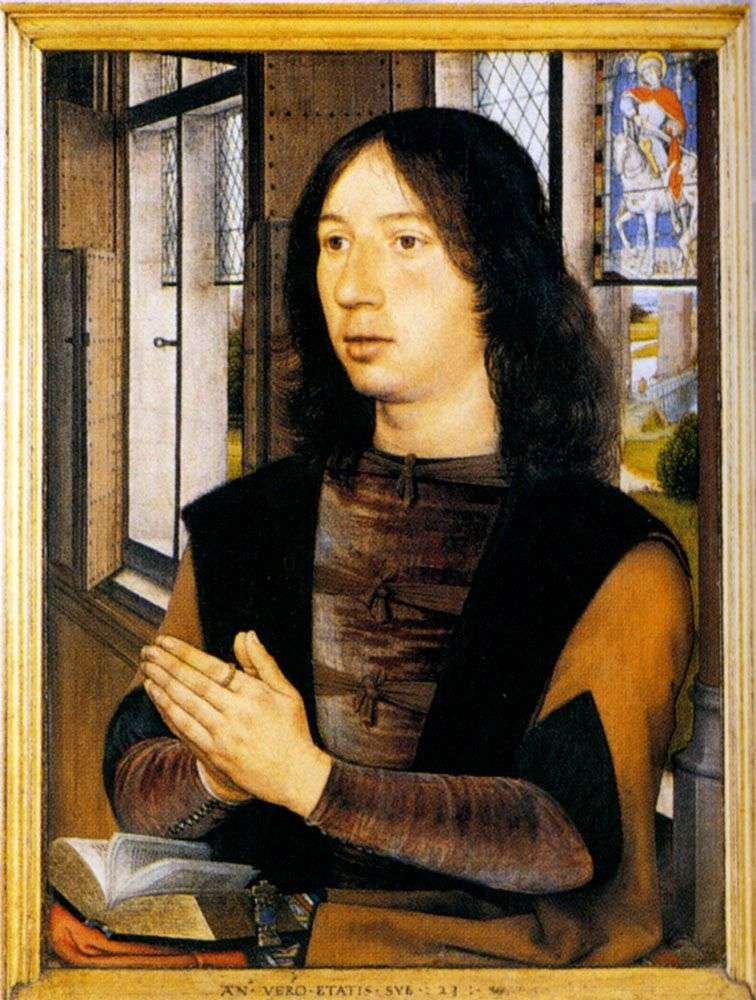 Diptych. Martin van Nyuvenhof. The right half is Hans Memling
Diptych. Martin van Nyuvenhof. The right half is Hans Memling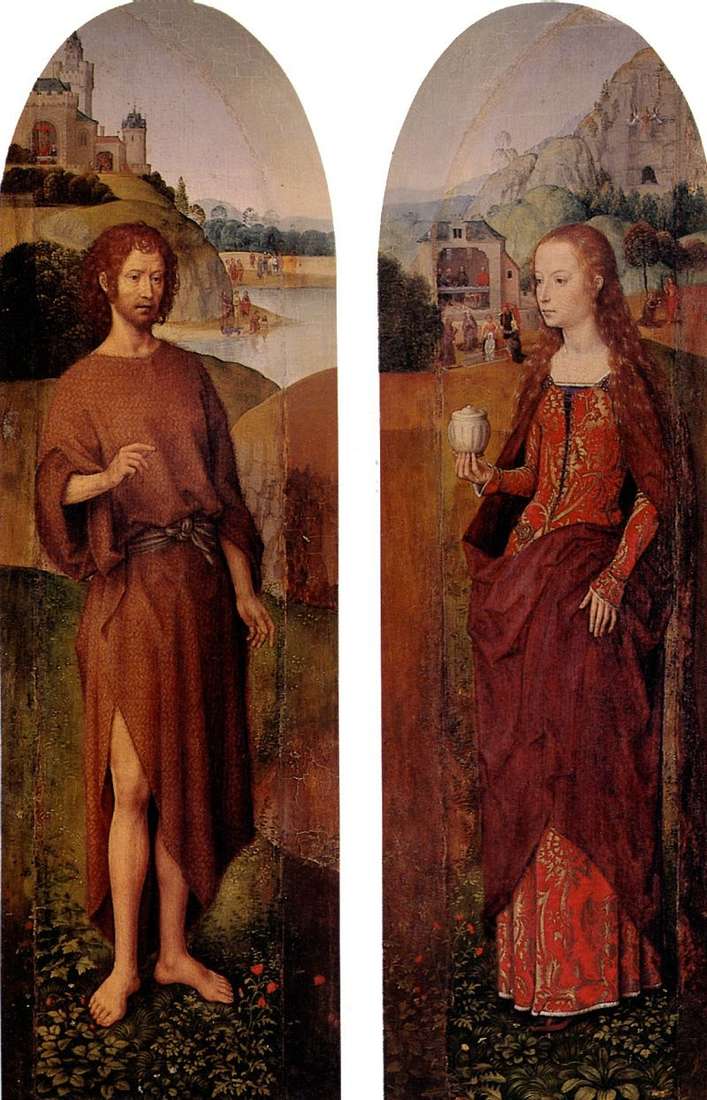 St. John the Baptist and St. Mary Magdalene. Triptych Side Sash by Hans Memling
St. John the Baptist and St. Mary Magdalene. Triptych Side Sash by Hans Memling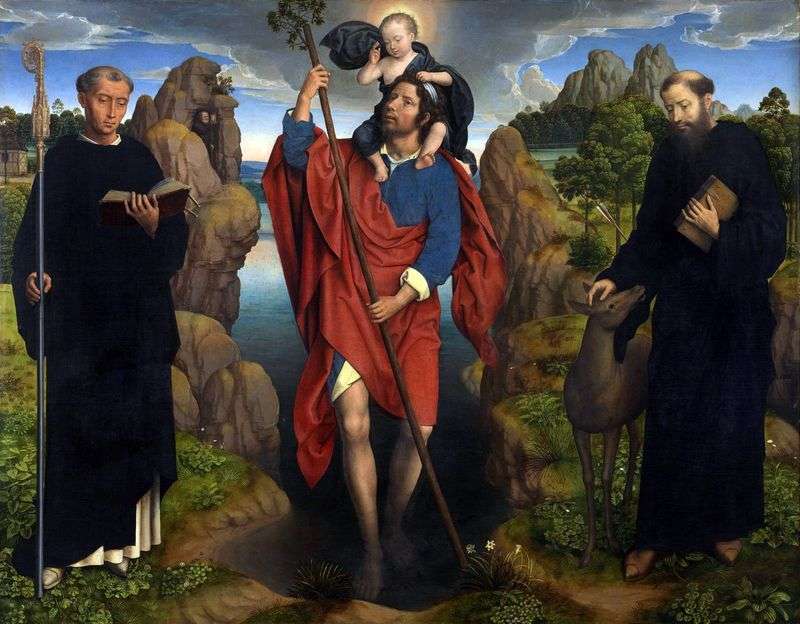 Saint Christopher by Hans Memling
Saint Christopher by Hans Memling Diptych. Martin van Nyuvenhof. Left half by Hans Memling
Diptych. Martin van Nyuvenhof. Left half by Hans Memling